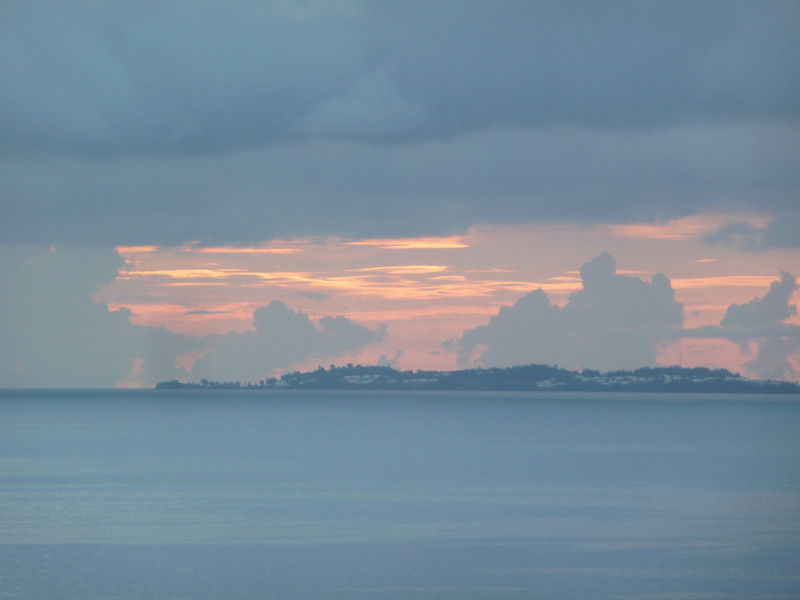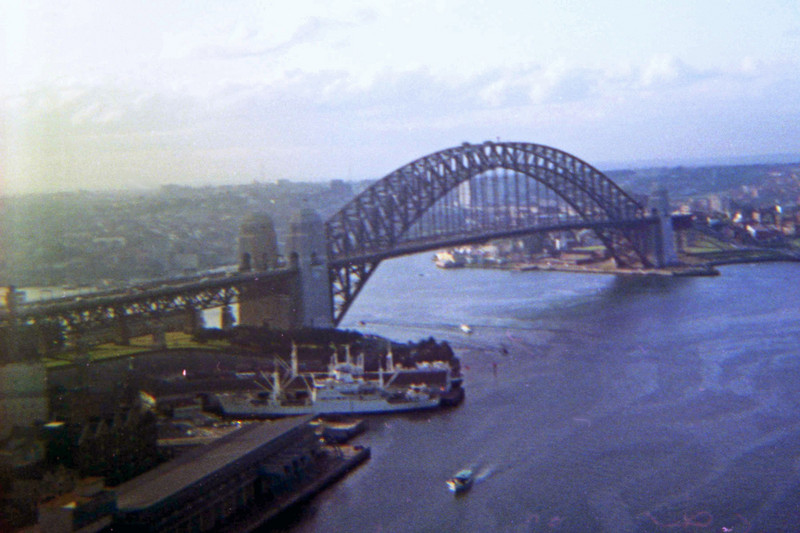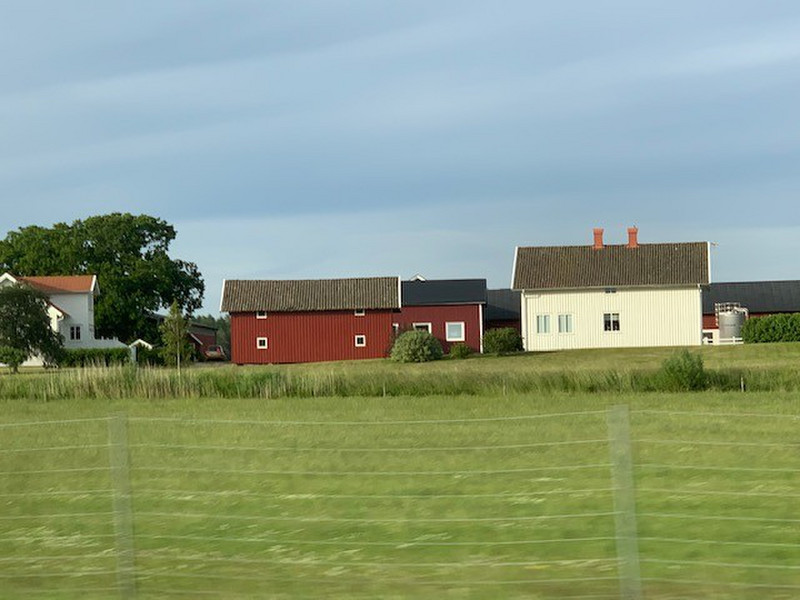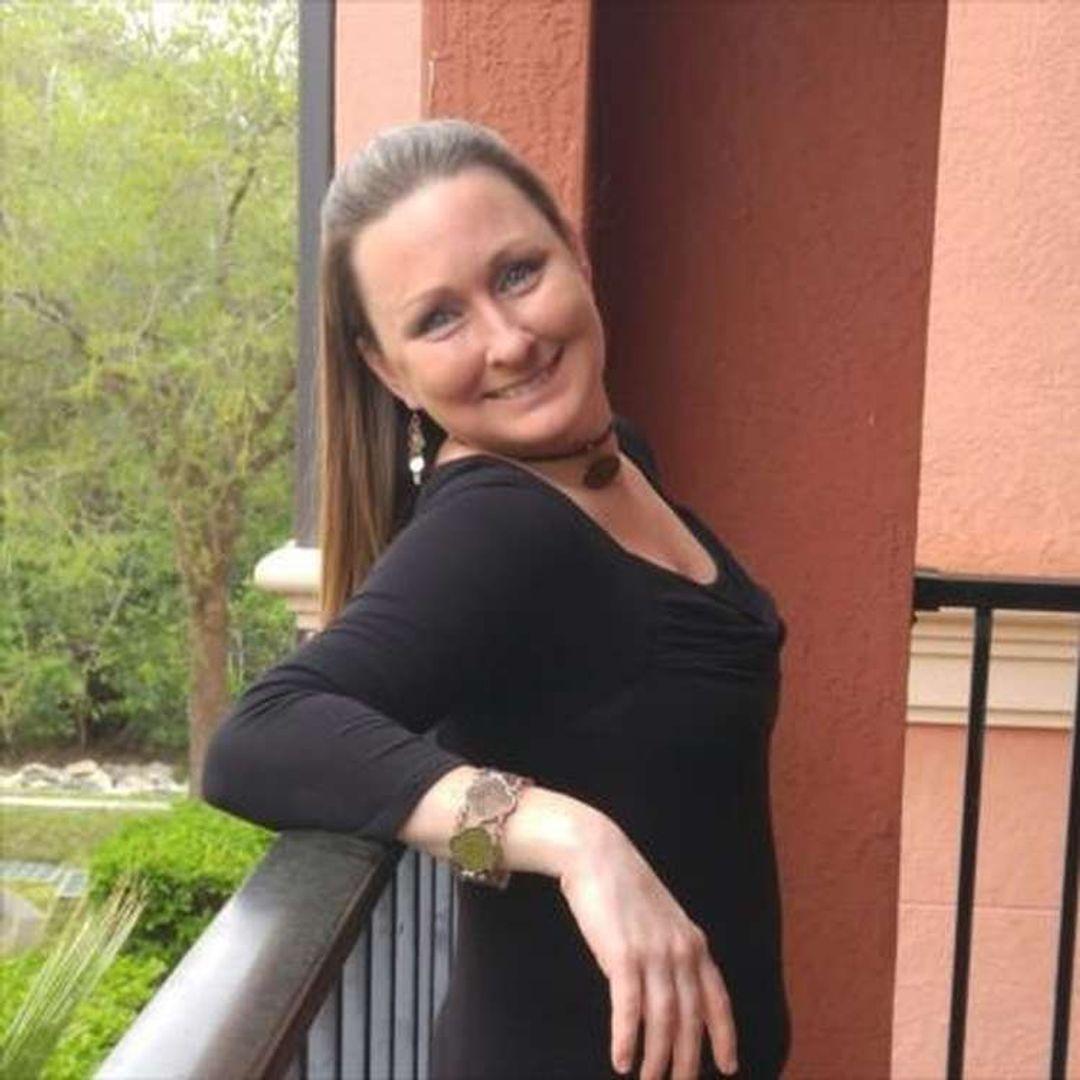Bermuda is said to be one of the most isolated places on earth. The nearest land is Cape Hatteras, North Carolina, 596 miles (nearly 1,000 km) away. Colleagues at work seemed to know very little about Bermuda when I told them I was traveling there. It is not part of the Caribbean, though it is often grouped with the Caribbean islands. Bermuda is a group of volcanic Atlantic Ocean islands (three main islands and dozens of smaller ones) warmed by the Gulf Stream. With a population of 66,000 it is the largest remaining British colony. As we were to discover, the history of Bermuda and Virginia are intertwined. Bermuda in fact was colonized when a group of ships bringing supplies to the Jamestown colony were blown there by a hurricane in 1609.
I was up on deck at 7:20 a.m. to watch our arrival at Bermuda. A pink colored dawn was already breaking over the islands. Appropriate, as Bermuda buildings are painted in shades of orange, rose, pink and yellow pastels. Two other cruise ships were also about: Veendam and Celebrity Summit. Norwegian Dawn made its way along the buoy marked channel towards the Dockyard at the Northwest tip of
Norwegian Dawn docked on time at 8:00 a.m. at Heritage Wharf in the Dockyard area of Sandys Parish. The captain reported the ship had traveled 704.6 nautical miles (1305 km) from New York at speed of 11.9 knots.
The former Royal Naval Dockyard has been developed as a cruise ship terminal. Its across the Great Sound from Hamilton, but there is frequent ferry service. For our first day in Bermuda, we planned to go to the town of St. George. We had breakfast in the Blue Lagoon on Deck 7. This was much less crowded on a port morning than the Garden Cafe buffet on Deck 12. The omelettes were very good, too.
After breakfast, the ship had been cleared and the gangway opened. We first bought a three day Bermuda bus and ferry pass at the center on the dock. Then we went across the Dockyard to queue for the ferry to St. George. An interesting character appeared. He was on his cell phone helping several people sort out their plans. (It seems they had missed the Hamilton ferry for their
organized activities.) When we boarded the ferry for St. George, there he was again, this time greeting visitors and handing out Bermuda maps. Wed soon find out more about him.
As the SeaExpress ferry made its way from the Dockyard along the north shore of Bermuda towards St. George, the gentleman who on board began pointing out sights along the way. Beaches. The Governors mansion. Fort St. Catherine. He seemed to be in the know. He quizzed passengers to see what they knew about Bermuda and its history. He talked about Bermudas founding in 1609 and its connection to Jamestown in Virginia. Bermudas first capital was St. George in 1612, but the capital was relocated to Hamilton in 1815. A good thing, too, he said. Otherwise, St. George would be all built up now and there would not be the preserved colonial buildings. Who was this fellow? The Mayor of St. George? Well, yes, thats right! He was a former mayor! Obviously, he reveled in visitors to his town.
The ferry docked at St. George at about 10:45 a.m. On the dock was another surprise. The costumed Town Crier was their to us to
Ferry M/V Bermudian at the Royal Naval Dockyard. Operated by Sea Express from Hamilton to Bermuda points. MMSI: 310996115. P1180098
St. George, ringing his bell. He was as into his role as any Colonial Williamsburg reenactor. St. George and Colonial Williamsburg share much Both were British colonial capitals at about the same time. St. George is full of 17th and 18th century structures, some museums, others still in everyday use. (They are not reconstructions as are so many of Williamsburgs structures.) The Town of St. George was named a UNESCO World Heritage Site in 2000 as the earliest English urban settlement in the New World.









